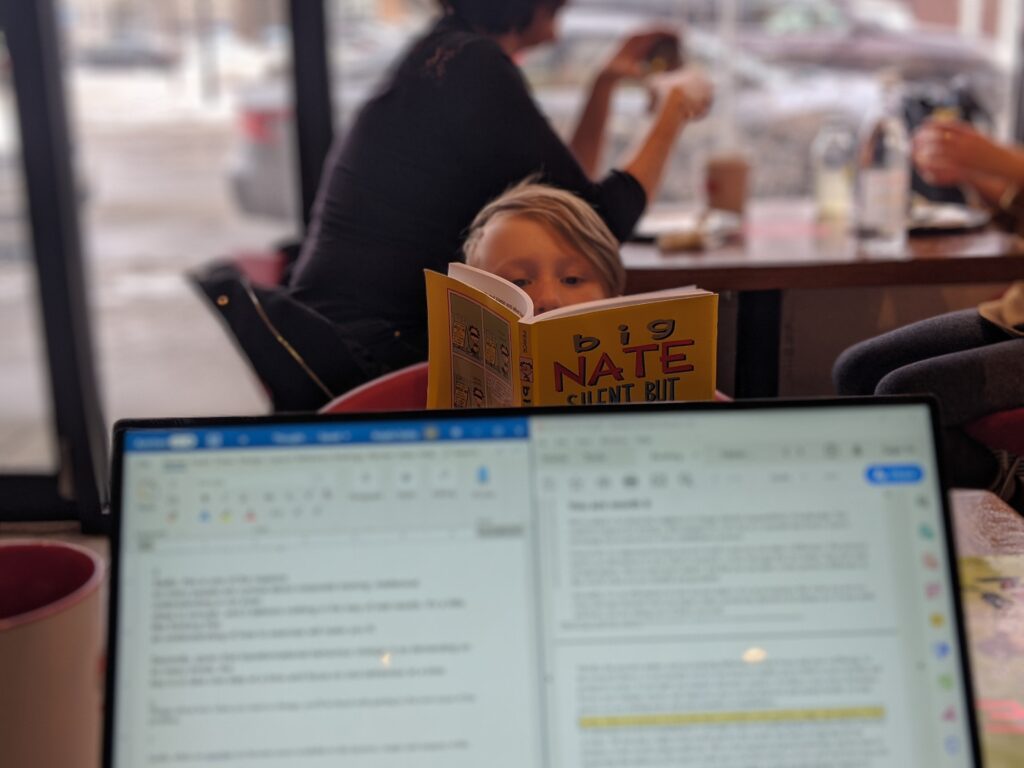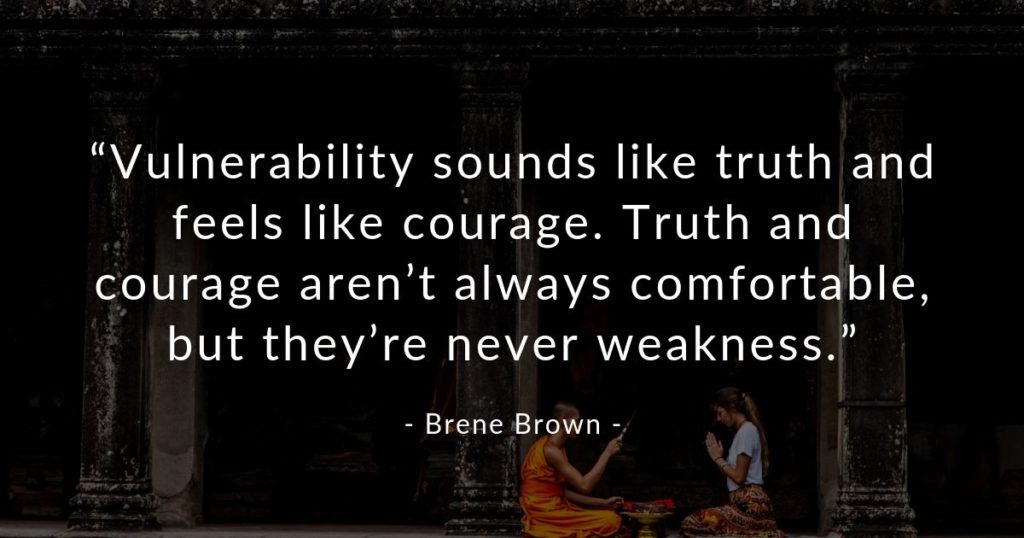Today, as I sit down to write, I’m lucky enough to be joined by my number one son—the one who tends to push me away, then claim to need to be by my side. So when he asked if he could join me while I work, rather than going for groceries with his dad, I said yes, partially to his request, but more to my willingness to be with him in a way that he needs me to be.

The moment is serendipitous because we started our time in a conversation that highlights his incredible knack for mindfulness. After I came back from the washroom, he began to explain to me that he was feeling freaked out, that he still feels freaked out when I’m not in his line of sight, a feeling that lingers from some early experiences of his mother (yes me) telling him I’d be right back, only to leave him waiting longer that a small child could handle. It’s something we talk about a lot, so when he revealed his feelings, I quickly reassured him that he was doing the right thing by noticing his feelings in the first place. I reminded him that it’s from this place of awareness that he had agency over his thoughts, and he could begin to change their meaning by letting himself know that he was indeed safe and that I would be back momentarily.
It is this aspect of mindfulness that has the power to sustain and support us to change, both ourselves and our organizations. Fabian (2013), Bunting (2016), and Hanson (2015) agree that you cannot solve a problem or change a behaviour without truly experiencing it in the first place. This is what my son was doing when he was describing his feelings to me. Noticing is one aspect of mindfulness.
Germer (2009) explains that at the heart of mindfulness is our ability to cultivate acceptance, which can support us through the ambiguity of external change, while not holding too tightly to our internal responses. Mindfulness fosters creativity, divergent thinking, and resilience because of the prime characteristic of accepting what is. From this place, we can invest our energy in devising supportive solutions, rather than holding on to and resisting the change that is required.
Fabian (2013) reminds us that there’s “no magic wand” (p. 98), and Hanson (2015) emphasizes that “mindfulness is a kind of mental muscle, and you can strengthen it by making it a regular part of daily life” (p. 25). This can be accomplished through a regular meditation practice because of the way it helps us bring a sense of calm responsiveness to our every day lives (Fabian, 2016). However, some might find it more accessible to invest time by simply noticing our feeling and thinking responses to the events of our daily lives. If the thoughts breed actions that promote a sense of efficacy and ease, we can intentionally cultivate more of these experiences. If our actions, on the other hand, promote anxiety, rash decisions, and discontent, then we have an opportunity. Rather than attempting to change the thoughts, we can sit with them, feel them in our bodies, and listen to what they are telling us. Often, we will be able to become “conscious of the core reason” (Bunting, 2016, p. 122) why we are feeling a certain way. From this place, we can choose a response, rather than give into a reaction.
Bunting (2016) attests that “transformational behaviour change is so demanding … the key is to take one step at a time” (p. 121), and Hanson (2016) encourages us to first find a sense of agency over our thoughts because we can choose how to frame a situation and choose our response. Remember, patience is required because changes like this do not always reveal immediate rewards; it is the practice over time that snowballs into transformation.
“At its essence, mindful leadership is about coming home to ourselves, and then inviting, influencing, serving and supporting others to do the same” (Bunting, 2016, p. 118).
References
Bunting, M. (2016). The mindful leader: 7 practices for transforming your leadership, your organisation and your life. https://ebookcentral-proquest-com.ezproxy.lib.ucalgary.ca/lib/ucalgaryebooks/reader.action?docID=4516137&ppg=20
Fabian, J. (2013). Moving forward; sitting still: An auto-ethnographic study of mindful educational leadership. Doctoral Dissertation. https://search-proquest-com.ezproxy.lib.ucalgary.ca/docview/1426639130?pq-origsite=primo
Germer, C. (2009). The mindful path to self-compassion. New York, NY: The Guilford Press.
Hanson, R. (2018). Resilient: How to grow an unshakable core of calm, strength, and happiness. New York, NY: Harmony Books.

